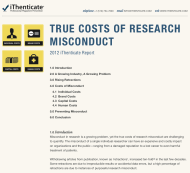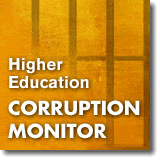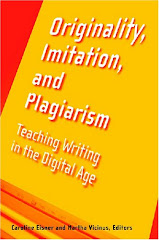The Commentary in the current issue of Nature by Mounir Errami and Harold Garner, A tale of two citations (Nature 451, 397-399;2008), has predictably received a lot of attention. In a nutshell, the authors ask whether scientists are publishing more duplicate papers, and by their newly devised, automated search of seven million biomedical abstracts, provide the answer that yes, they are.
At the Nature Precedings forum on Nature Network, for example, Hilary Spencer wonders whether posting one’s paper on a preprint server, which has been suggested as one possible check/balance in the system, may rather "facilitate the very plagiarism that it can help to later detect. For many authors, this is a legitimate fear in today’s cut-and-paste climate. Is the risk (of facilitating plagiarism) worth the benefit (of facilitating detection)?" A systematic check by journals of their submitted papers against preprint servers for plaigiarism would be needed if Hilary's suggestion has any foundation (see this Nautilus post for details of an earlier scandal along these lines). Such a check, of course, would be another cost to the publisher of the journal before a research paper could be published.
At the Publishing in the New Millennium forum, also at Nature Network, there is an informed and passionate debate among the scientists in the group about whether more duplicate papers are being published in their fields; whether there are legitimate reasons to publish similar versions of the same paper in different journals; and if there is a problem, how it can be stemmed.
Martin Fenner writes about the issue on his blog, Gobbledygook, and from this post links to some other blog discussion arising from the Commentary. There is another post here, on Nascent (NPG's web publishing department blog) by Euan Adie, which refers to the plagiarism-detection software Cross Check.
In the middle of all the heated discussion, it is worth bearing in mind the policy advice that the Nature journals provide for authors and potential authors who would like guidance for how we, the editors, see this issue. So please see our author and reviewers' website for our polices on: plagiarism, fabrication and due credit for unpublished data; duplicate publication; authorship in general; and confidentiality/pre-publicity. We hope that these policies provide clear and helpful guidance. Authors and potential authors wishing more details can find links to relevant, free-access, journal editorials on each of these pages. Feedback and suggestions are welcome, either as comments to this post or via email.







